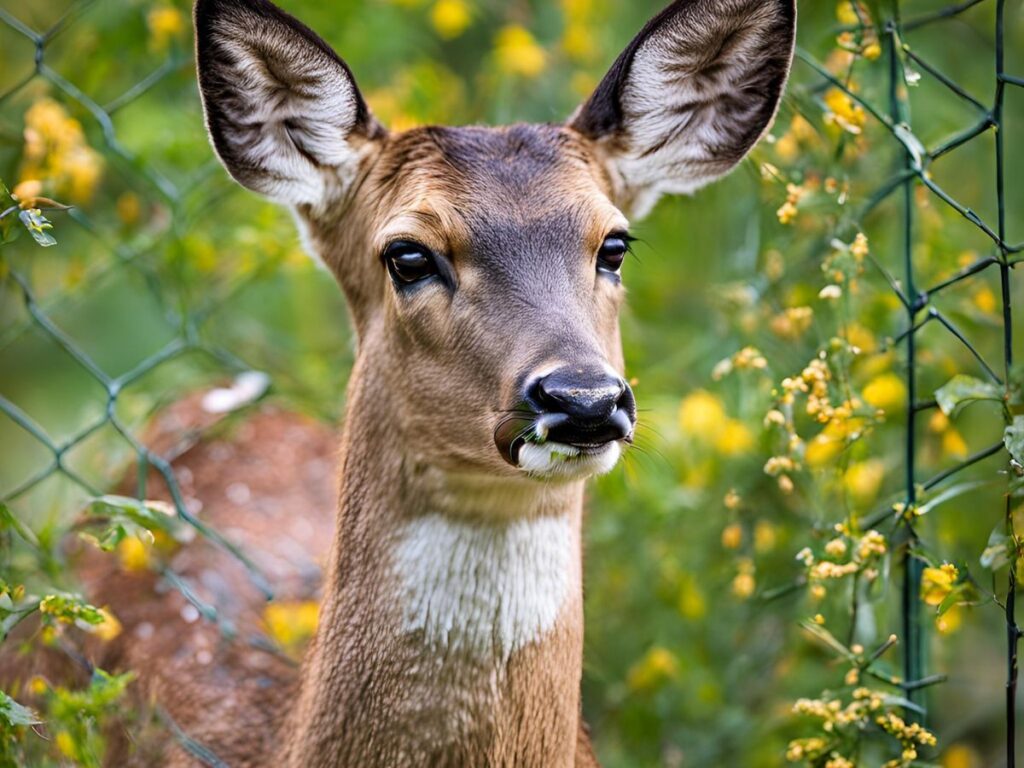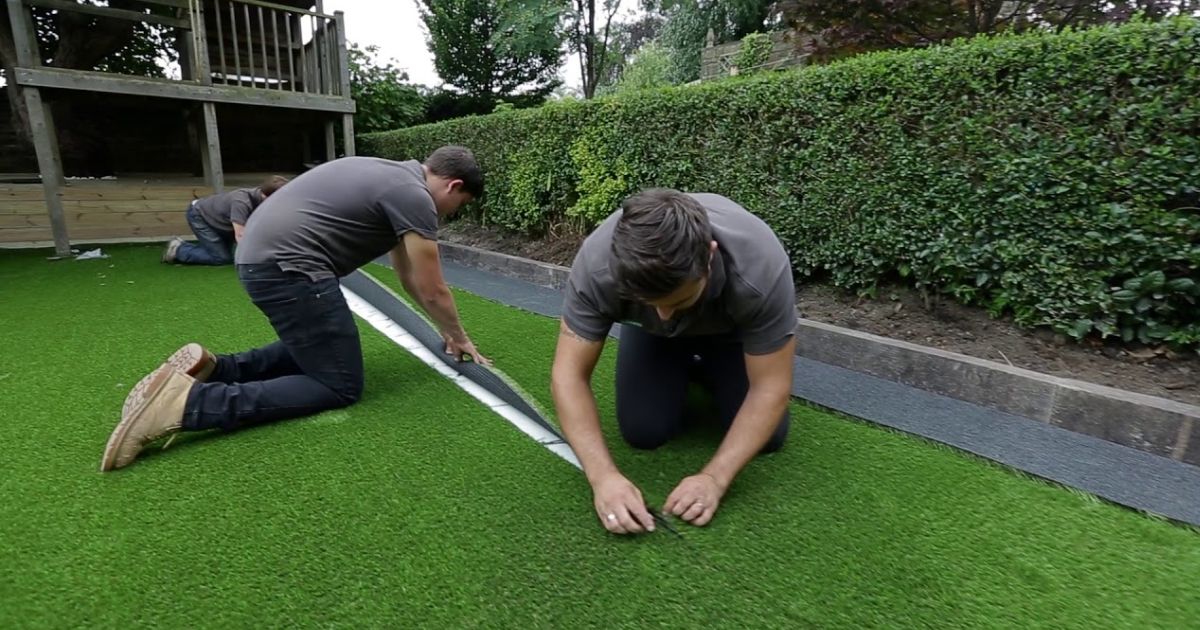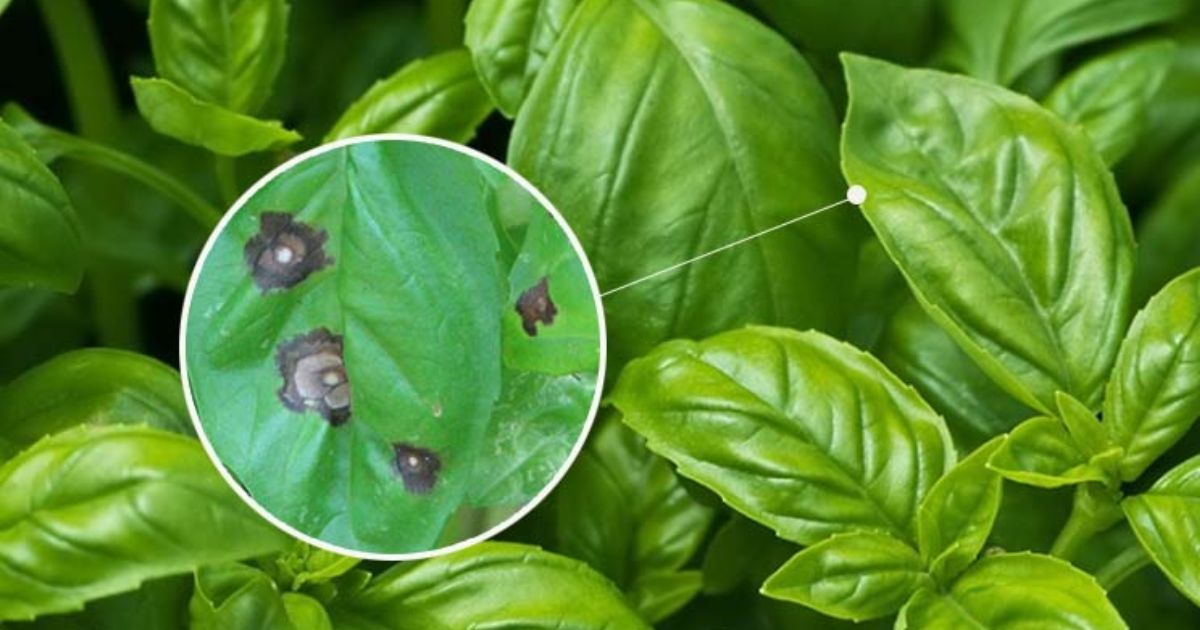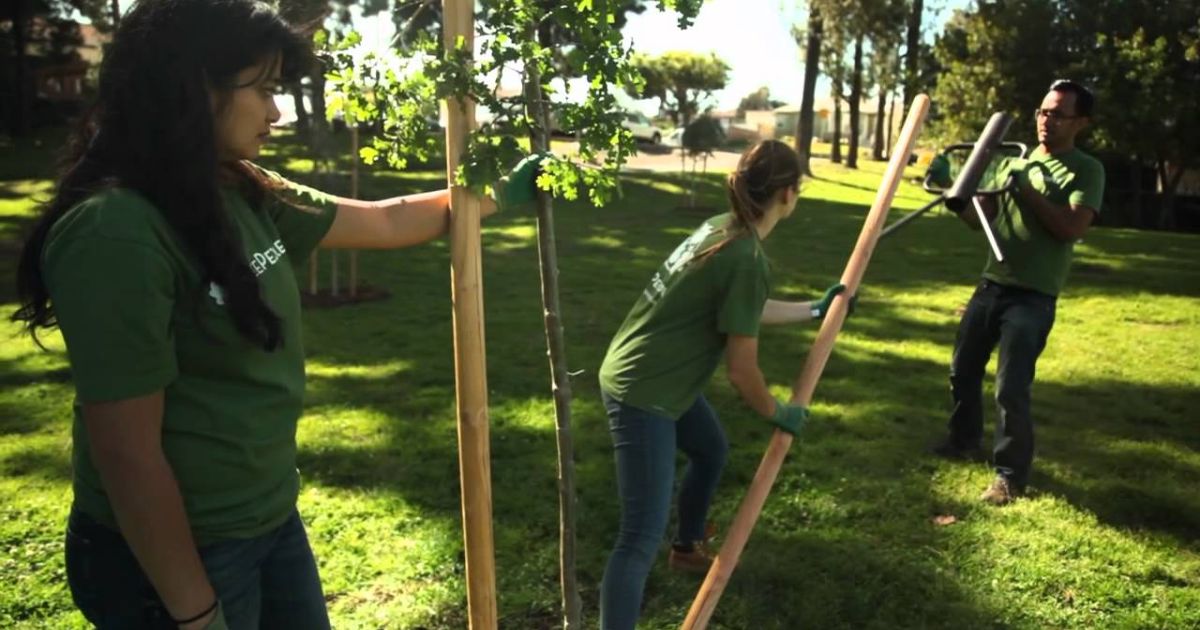Deer are graceful creatures, but when they wander into your garden, they can quickly become a gardener’s nightmare. Their insatiable appetite for plants can wreak havoc on your carefully cultivated greenery, leaving behind trampled flowers and stripped bushes. While it might be tempting to resort to harsh measures, there are more compassionate ways to protect your garden from these gentle intruders. In this article, we’ll explore 10 humane ways to keep deer out of your garden, allowing you to safeguard your plants without harming the local wildlife.
Adopting humane methods preserves the natural balance and ensures that your garden remains a peaceful and thriving space. These solutions are ethical and practical, from installing adequate fencing to using natural repellents. Whether you’re a seasoned gardener or a beginner, these strategies will help you maintain a flourishing garden while keeping deer at bay. Let’s dive into these gentle yet effective techniques.
Understand the Problem
Deer are naturally drawn to gardens for several reasons, making them frequent visitors in many residential areas. Gardens offer an abundant food source, from leafy greens and flowers to fruits and vegetables, which are irresistible to deer, especially when natural food sources are scarce. Additionally, gardens can provide water and shelter, creating a haven where deer can rest and feed.
However, this attraction can lead to significant problems for gardeners. Deer can cause extensive damage by trampling plants, eating foliage, and stripping tree bark. Their feeding habits can devastate a garden in a single night, undoing months of hard work and care. Furthermore, their presence can disrupt the ecosystem, leading to soil compaction and affecting the growth of other plants.
Given the ecological impact and aesthetic damage to gardens, finding effective ways to deter deer is crucial. Yet, it’s equally important to do so humanely, respecting these animals as part of the natural environment. Humane solutions protect your garden and ensure that deer are not harmed, maintaining a balanced coexistence between wildlife and human habitation. This approach promotes ethical gardening practices and helps foster a healthy ecosystem.
10 Humane Ways to Keep Deer Out
1. Install Fencing
Humane fencing for deer is one of the most effective and long-term solutions to keep deer out of your garden. Several deer-proof fencing options are available, each catering to different garden sizes and aesthetic preferences.
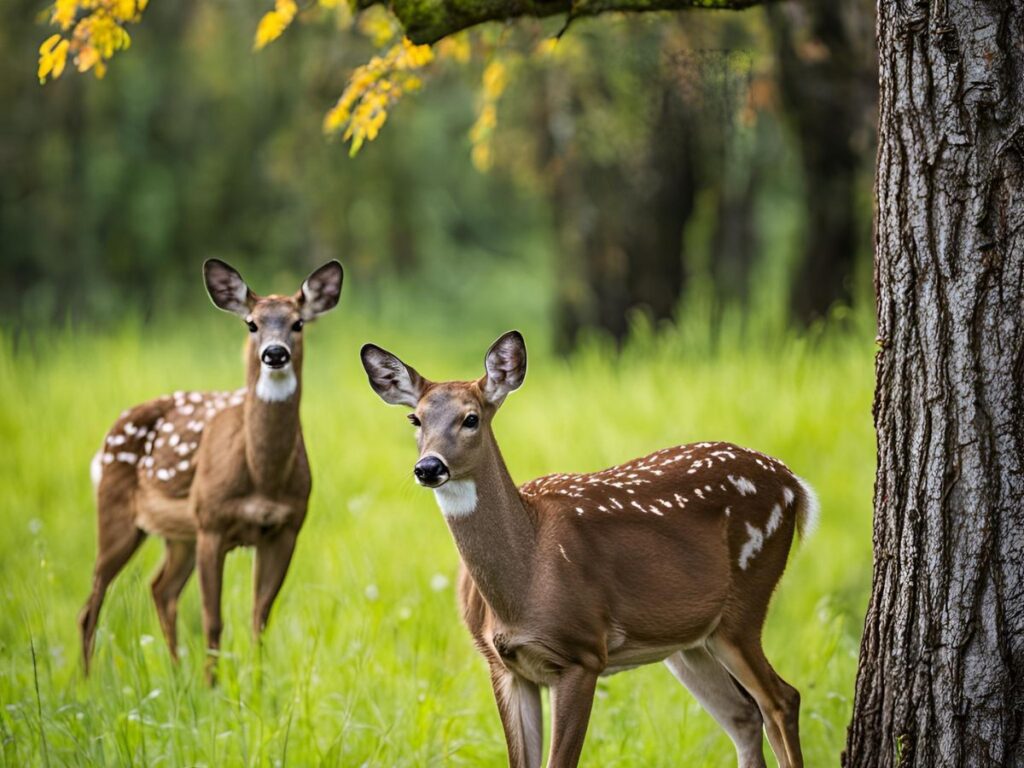
Description of Deer-Proof Fencing Options
- Wooden Fences: Solid wooden fences offer a sturdy and visually appealing barrier. They are effective because they block the deer’s view of your garden, reducing the jumping temptation.
- Woven Wire Fences: These fences are cost-effective and practical for larger areas. Woven wire creates a physical barrier that is difficult for deer to penetrate or jump over.
- Electric Fences: Electric fences provide a mild shock when touched, deterring deer from attempting to breach them. These fences are particularly useful in rural or expansive properties.
Tips for Effective Fence Installation
- Height: The most critical factor in deer-proof fencing is height. A fence should be 8 feet tall since deer can jump very high. For added security, you can slant the top outward to make it even harder for deer to leap over.
- Materials: Use durable materials like high-tensile wire, wood, or metal that can withstand the elements and the occasional bump from wildlife. Ensure the materials are tightly secured to prevent gaps or weak points that deer can exploit.
- Underground Extension: Deer can also dig under fences, so extending the fence a few inches underground or adding buried mesh is a good idea to deter digging.
- Gates: To prevent entry, install gates with secure latches and ensure they are as tall and sturdy as the rest of the fence.
By using humane fencing for deer, you create a physical barrier that effectively protects your garden without causing harm to the animals, ensuring both your plants and local wildlife coexist peacefully.
2. Use Deer-Resistant Plants
Incorporating 7ft deer fence into your garden is a natural and effective way to deter deer without harming them. These plants have characteristics that make them less appealing to deer, such as strong odors, rugged textures, or even toxicity.
List of Plants Deer Typically Avoid
- Lavender: Known for its fragrant scent, lavender is a plant that deer usually avoid due to its strong smell.
- Marigolds: With their pungent odor and vibrant flowers, marigolds are both decorative and practical in repelling deer.
- Yarrow: This plant has a bitter taste and rough texture, making it unappealing to deer.
- Foxglove: A toxic plant, deer naturally avoids foxglove to prevent harm.
- Daffodils: Their alkaloid content makes them unpalatable to deer, deterring them from nibbling on these flowers.
- Sage: Sage’s intense aroma and rough texture make it a deer deterrent.
How Planting These Can Deter Deer
Strategically placing deer-resistant plants around your garden creates a natural barrier that discourages deer from venturing further into your space. These plants can surround more vulnerable or desirable plants, 7 deer fence providing a protective buffer. Additionally, unpalatable plants signal to deer that your garden is not a viable food source, reducing their visits over time. how to keep onions from spoiling
Using 7 foot deer fence is a sustainable and aesthetically pleasing method of protecting your garden. It allows you to maintain its beauty while keeping deer at bay.
3. Apply Natural Repellents
How do i keep deer away from my garden offer a humane and environmentally friendly way to keep deer out of your garden. These homemade solutions use safe ingredients for plants and the environment but are unpleasant for deer.
Recipes and Methods for Homemade Repellents
- Garlic Spray:
- Ingredients: 5-6 cloves of garlic, 1 tablespoon of liquid dish soap, 1 gallon of water.
- Method: Crush the garlic cloves and mix them with water. Let the mixture sit overnight. Add dish soap to the mixture and strain it into a spray bottle.
- Application: Spray this solution on plants and around the garden’s perimeter. The pungent smell of garlic will deter deer.
- Soap Shavings:
- Ingredients: Strong-scented bar soap (such as Irish Spring).
- Method: Shave the soap into small pieces and scatter them around your garden.
- Application: Place the soap shavings near plants that deer tend to target. The scent will act as a repellent.
- Egg Spray:
- Ingredients: 2 eggs, 1 gallon of water.
- Method: Blend the eggs with water and strain the mixture into a spray bottle.
- Application: Spray this solution on plants. The smell of eggs repels deer, and the solution is safe for plants.
Frequency of Application
To maintain the effectiveness of low cost deer fence, apply them regularly, especially after rainfall, as water can wash away the scents. To ensure consistent protection, reapply these solutions every 7-10 days or after heavy rain.
By using natural deer repellents, you can protect your garden without harsh chemicals, will a 4 foot fence deter deer ensuring a safe and humane environment for your plants and the local wildlife.
4. Introduce Scents Deer Dislike
Using scents to deter deer is a simple and humane way to keep these animals away from your garden. Deer have a highly developed sense of smell, making them sensitive to certain odors that signal danger or discomfort. How to Stop Cats from Turning Your Garden into Their Playground
Use of Human Hair, Predator Urine, or Scented Plants
- Human Hair: The scent of human hair can deter deer as it suggests human presence. You can collect hair from brushes or salons, place it in mesh bags, or hang it around your garden.
- Predator Urine: Deers naturally avoid areas where predators are detected. Predator urine, such as from foxes or coyotes, can be purchased and applied around the garden to create a deterrent zone.
- Scented Plants: Some plants emit odors that deer find unpleasant. Examples include mint, lavender, and rosemary. Planting these around your garden’s perimeter can help keep deer at bay.
Placement and Effectiveness
- Strategic Placement: Place human hair or predator urine regularly around the garden’s perimeter and near plants that deer frequently target. Hanging hair bags from trees or stakes ensures the scent disperses effectively.
- Effectiveness: While these methods are effective, they may need frequent replenishment to maintain their potency. Reapply predator urine and replace hair bags every few weeks or after heavy rainfall to keep the scents strong.
By introducing 7 ft deer fence, you create a natural and humane barrier that discourages deer from entering your garden, protecting your plants without causing harm to the animals. growing asparagus in raised beds
5. Use Visual and Auditory Deterrents
Visual and auditory deer deterrents are effective and humane ways to discourage deer from entering your garden. These methods rely on creating sudden movements or deer proof garden fence sounds that startle and scare deer, making them feel unsafe and less likely to approach.
Wind Chimes
Wind chimes produce an unpredictable, melodic sound that can be unsettling to deer. The constant noise, combined with movement, creates an environment that feels unstable to them. The sound of wind chimes can disturb the deer’s sense of calm and alert them to potential danger in the area. Hanging wind chimes in trees or near garden entry points can provide a non-invasive solution to deter deer.
Reflective Tape
Reflective tape, often used in gardening as a deterrent, catches light and creates flashes that disorient deer. When sunlight or artificial light hits the tape, it produces bright flashes that deer find unsettling. The shiny, moving surfaces of the tape are particularly effective when installed in areas with high wind, which causes the tape to flutter and reflect light. Hang reflective tape along fences, trees, or garden borders to discourage deer from venturing closer.
Motion-Activated Lights
Motion-activated lights can be highly effective in scaring deer away from your garden. These lights are triggered by motion, which startles deer and creates a sudden, bright disturbance in the area. The unexpected nature of the lights, often combined with sounds or other features, makes deer wary of returning to the area. Install these lights near entry points or places where deer are most active to keep them at bay.
How These Deterrents Deter Deer
Deer rely heavily on their senses to navigate their surroundings. Visual and auditory deer deterrents disrupt these senses, making them feel threatened or uneasy. The unpredictable sounds and flashing lights create a sense of danger, encouraging deer to move away from the area. These deterrents are particularly effective in keeping deer out of your garden without causing harm, making them a humane solution for garden protection.
Using visual and auditory deer deterrents, you create a dynamic environment that constantly changes, keeping deer on alert and encouraging them to seek out safer areas. how to store bare root strawberries
6. Install Motion-Activated Sprinklers
Motion-activated sprinklers for deer offer a practical and humane solution for keeping deer out of your garden. These sprinklers are designed to detect movement and release a burst of water, which startles and discourages deer from entering the area.
How These Sprinklers Work
Motion-activated sprinklers have a motion sensor that detects movement in a specified range. Once a passing deer triggers the sensor, the sprinkler releases a sudden burst of water, 7 foot metal deer fence which is surprising and unpleasant for the animal. The sprinkler typically operates using a standard garden hose, and its range can be adjusted to cover specific areas of the garden. The highly sensitive motion sensors ensure the sprinklers activate quickly when a deer approaches.
Benefits of Surprise Water Sprays
- Instant Deterrent: The sudden water spray catches the deer off guard, causing them to retreat quickly. Deer are sensitive to sudden changes in their environment, and the surprise of a water burst is enough to make them associate the area with discomfort.
- Humane Solution: Unlike traps or harmful chemicals, motion-activated sprinklers are a non-invasive, humane way to deter deer. The water does not harm the animals but creates an unpleasant experience they will avoid.
- Protection Without Effort: Motion-activated sprinklers provide continuous protection with minimal maintenance. They automatically activate when deer are detected, allowing you to focus on other garden tasks without constant vigilance.
- Water Conservation: Many motion-activated sprinklers are designed to be water-efficient, releasing only short bursts of water when needed. This makes them a practical solution that doesn’t waste excessive amounts of water.
By installing motion-activated sprinklers for deer, you can effectively and gently protect your garden from deer damage. The sudden water sprays create a natural deterrent, ensuring your plants remain protected without harming the animals.
7. Create Physical Barriers
Physical barriers to keep deer out are one of the most effective and humane ways to protect your garden from deer damage. By creating physical obstacles, you can prevent deer from accessing specific plants or entire garden sections. These barriers limit deer movement, making it difficult for them to browse or feed on your plants.
Using Netting or Plant Cages
- Netting: Garden netting is an affordable and versatile option for creating physical barriers. By draping netting over plants or surrounding your garden, you can create an effective defense against deer. The mesh prevents deer from reaching the plants, while the flexible material makes it easy to install. Opt for netting with small enough holes to prevent deer from pushing through and getting to your plants. Secure the netting to the ground or garden beds to keep it in place.
- Plant Cages: Using plant cages or enclosures is an excellent solution for individual plants that are particularly vulnerable. These cages can be made from wire, plastic, or metal and are available in various sizes. Place the cage around your plant to create a barrier that keeps deer from accessing it. Plant cages work well for flowers, shrubs, and vegetables. They are easy to install and provide targeted protection without affecting the entire garden.
Suitable for Specific Plants or Entire Sections
- Targeted Protection: Plant cages or small sections of netting can be used for specific plants that deer tend to favor, such as roses, vegetables, or fruit-bearing plants. This allows you to protect valuable or delicate plants without investing in a large-scale barrier.
- Complete Garden Protection: Consider using netting or fencing to surround the area for more extensive gardens. This method ensures that deer cannot enter the garden, offering complete protection. If you have a large garden or several high-risk areas, combine multiple types of barriers for optimal results.
By using physical barriers to keep deer out, you can safeguard your garden in a practical and humane way. These barriers prevent deer from damaging your plants while allowing you to enjoy a thriving garden without worrying about constant deer intrusion.
8. Keep Your Garden Tidy
Maintaining a 7′ deer fence is a simple yet highly effective way to discourage deer from frequenting your garden. Deer are naturally drawn to areas where food and shelter are abundant. By keeping your garden well-maintained, you remove these attractions, making your garden a less appealing place for deer to visit.

Removing Fallen Fruit and Overgrown Plants
- Fallen Fruit: Deer are opportunistic feeders and will readily consume fallen fruit such as apples, pears, and berries. If you have fruit trees or berry bushes in your garden, it’s important to collect any fallen fruit regularly. Leftover fruit on the ground serves as an easy food source for deer and can also attract other wildlife, increasing the likelihood of deer visiting. Promptly removing fallen fruit will reduce the temptation for deer to linger.
- Overgrown Plants: Overgrown shrubs, tall grasses, and weeds provide cover and shelter for deer. A cluttered garden can become a hiding spot, making it a more attractive area for deer to forage. Regularly trimming plants and removing weeds will eliminate these hiding spots and discourage deer from feeling safe in your garden. Additionally, keeping plants well-pruned can make your garden less inviting, as deer prefer dense vegetation for cover.
How a Clean Garden is Less Attractive to Deer
A tidy garden to deter deer helps create a less welcoming environment. By removing potential food sources like fallen fruit and eliminating sheltering spots like overgrown plants, you decrease the appeal of your garden. Deer are more likely to avoid areas where their basic needs for food and shelter are not easily met. A well-maintained garden sends the message that it is not a safe or convenient place for deer to forage, prompting them to look elsewhere for food.
By keeping your garden neat and free of fallen fruit and overgrown plants, you are taking an essential step in keeping deer away without chemicals or traps. This simple maintenance task provides long-term benefits in protecting your garden from deer damage.
9. Install Raised Garden Beds
Installing raised garden beds for deer protection is an excellent strategy to safeguard your plants from deer while enhancing your garden’s aesthetic appeal and functionality. Elevating your garden beds creates a physical barrier that makes it harder for deer to access your plants, reducing the likelihood of damage.
Benefits of Elevated Planting
- Easy Access and Maintenance: Raised garden beds are more straightforward to tend to, as they reduce the need for bending or kneeling while planting, weeding, and harvesting. Elevated planting also helps improve drainage, which leads to healthier plants.
- Improved Soil Quality: Because raised garden beds allow you to control the soil quality, you can use the best soil mix for your plants, leading to better growth and more productive gardens. Deers are less likely to damage healthy plants, making it a dual-purpose benefit.
- Increased Plant Growth: Raised beds warm up faster in the spring, giving plants a head start and promoting early growth. This can help your plants thrive before deer become a significant concern.
How it Reduces Deer Access
- Physical Barrier: Deers are less likely to reach elevated above-ground level plants. By raising your garden beds, you increase the height of the plants and soil, making it difficult for deer to access them easily. This barrier reduces the chance of deer browsing or damaging your plants.
- Decreased Risk of Grazing: Deer often feeds on plants within easy reach, particularly ground-level plants. With raised garden beds, the plants are placed higher than the typical browsing height of deer, making it more challenging for them to nibble on your vegetables, flowers, or shrubs.
- Protecting Vulnerable Plants: Raised garden beds are particularly useful for safeguarding vulnerable or high-value plants, such as fruits and vegetables, which deer tend to favor. To deter deer, you can add additional protection, such as netting or cages, around the raised beds.
By installing raised garden beds for deer protection, you make it harder for deer to access your plants and create a more organized and manageable garden. Elevated planting provides a physical deterrent while offering multiple benefits for plant health, making it an ideal solution for keeping your garden deer-free.
10. Use Companion Planting
Companion planting to deter deer is a natural and eco-friendly method of keeping deer away from your garden. By strategically combining certain plants, you can create an environment that naturally repels deer without chemicals or harsh deterrents. Some plants emit strong scents or have tastes that deer find unappealing, and when planted together, they can form a natural barrier to protect your more vulnerable plants.
Combining Plants to Naturally Deter Deer
Certain plants naturally deter deer due to their strong odors, textures, or taste. By incorporating these plants into your garden in the right combinations, you can create a less attractive garden for deer. Deer are less likely to approach areas where they encounter these pungent or bitter plants. Companion planting works by leveraging these natural properties, allowing you to protect your garden gently and non-invasively.
Example Plant Combinations
- Garlic and Roses: Garlic has a strong smell that deer tend to avoid, and when planted near roses, it can act as a natural deterrent. Combining the garlic’s scent and the roses’ thorns makes this pairing particularly effective.
- Lavender and Zinnias: Lavender’s strong, fragrant aroma is known to repel deer, and when paired with zinnias, it helps keep deer away from your garden. Lavender also attracts beneficial pollinators like bees, making it a good companion for other plants.
- Chives and Carrots: Chives emit a strong onion-like scent, which deer typically dislike. Pairing chives with vegetables like carrots helps deter deer and improves the flavor and growth of your carrots by deterring pests that normally target them.
- Marigolds and Lettuce: Marigolds produce a strong scent that deer find unpleasant and help repel other pests. Planting marigolds near lettuce can discourage deer from eating leafy greens while adding color to your garden.
- Thyme and Cabbage: Thyme is another herb with a pungent smell that deer dislike. When planted alongside cabbage, thyme helps keep deer from munching on your leafy vegetables, adding a wonderful fragrance and flavor to your garden.
Using companion planting to deter deer, cheap deer fencing you can naturally protect your plants without chemical repellents or expensive fencing. The strategic combination of deer-repellent plants with your more vulnerable plants creates a harmonious and effective defense against deer, all while promoting biodiversity and the health of your garden.
Conclusion:
Protecting your garden from deer while maintaining a humane approach is practical and essential. By choosing methods like humane fencing for deer, using deer-resistant plants, applying natural deer repellents, and employing other deterrents such as motion-activated sprinklers and companion planting, you can safeguard your plants without causing harm to the animals. These humane methods prevent deer damage and promote a healthy, sustainable gardening environment where humans and wildlife can coexist peacefully.
Each garden is unique, so selecting the techniques that best suit your space, climate, and specific needs is essential. Whether you’re looking for a more permanent solution, like raised garden beds for deer protection or simply adding visual and auditory deer deterrents to your garden, there are various options to explore.
We encourage you to try these methods and see which ones work best for your garden. Have you had success using any of these techniques? Feel free to share your experiences or ask any questions in the comments below—we’d love to hear from you and help you create a deer-free, thriving garden!
FAQs:
1. What is the most effective humane way to keep deer out of my garden?
The most effective humane methods often include installing deer-proof fencing, using natural deer repellents, and planting deer-resistant plants. Each garden is unique, so a combination of strategies may work best. For example, fencing can be paired with scents like garlic or predator urine for added deterrence.
2. How high should my fence be to keep deer out?
Deer are excellent jumpers, so humane fencing for deer should be at least 8 feet high. The taller the fence, the more difficult it is for deer to clear. Consider using materials like woven wire or plastic mesh, which are durable and effective at keeping deer out.
3. Do natural repellents work to keep deer away?
Yes, natural deer repellents can be effective when applied consistently. Homemade repellents, such as garlic spray or soap shavings, can deter deer by creating an unpleasant scent. It’s important to reapply them after rain or every few weeks to maintain their effectiveness.
4. What are some deer-resistant plants I can use in my garden?
Some plants that deer typically avoid include lavender, chives, rosemary, and daffodils. Incorporating these deer-resistant plants into your garden can reduce the likelihood of deer browsing and enhance your garden’s beauty and fragrance.

